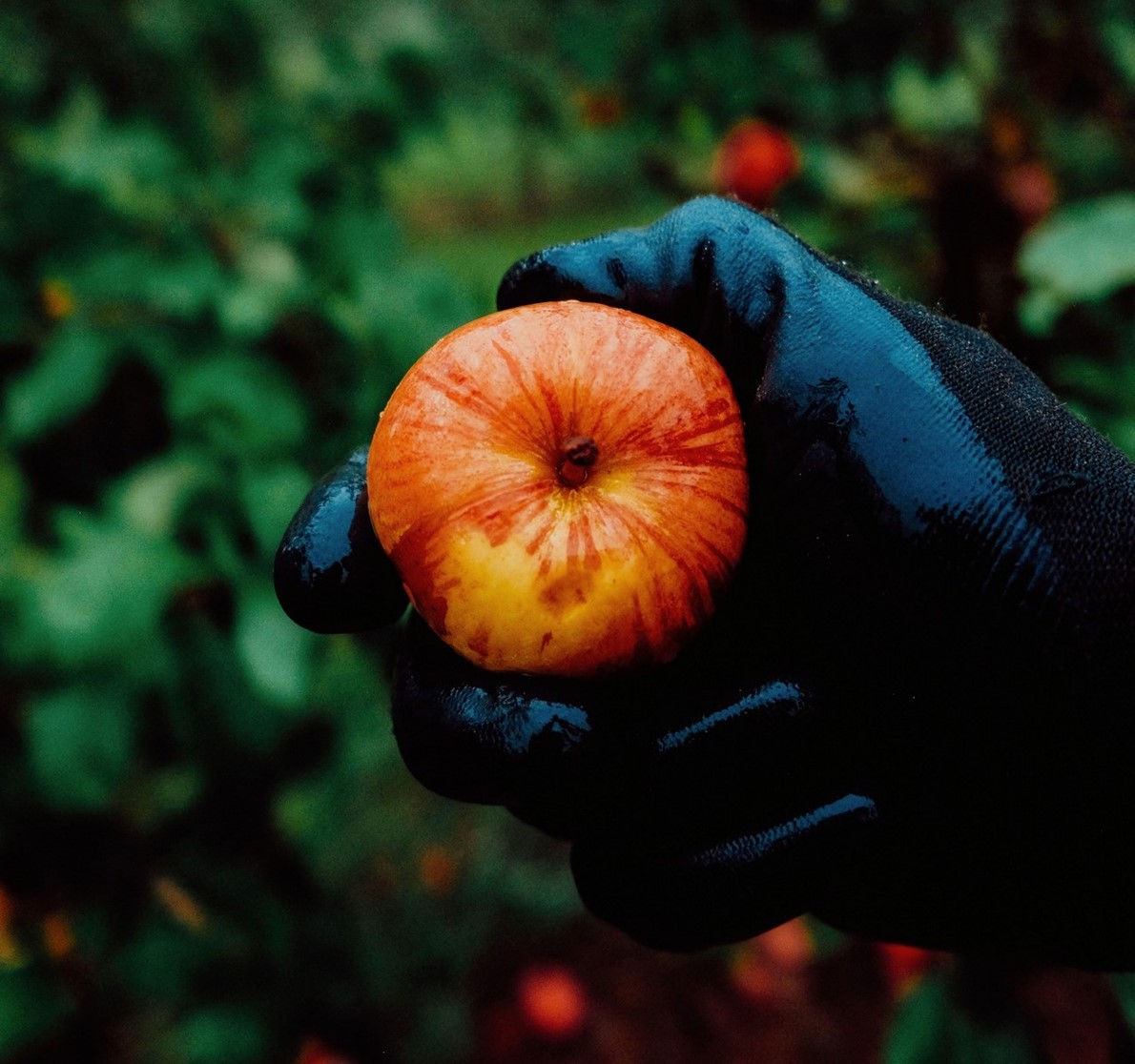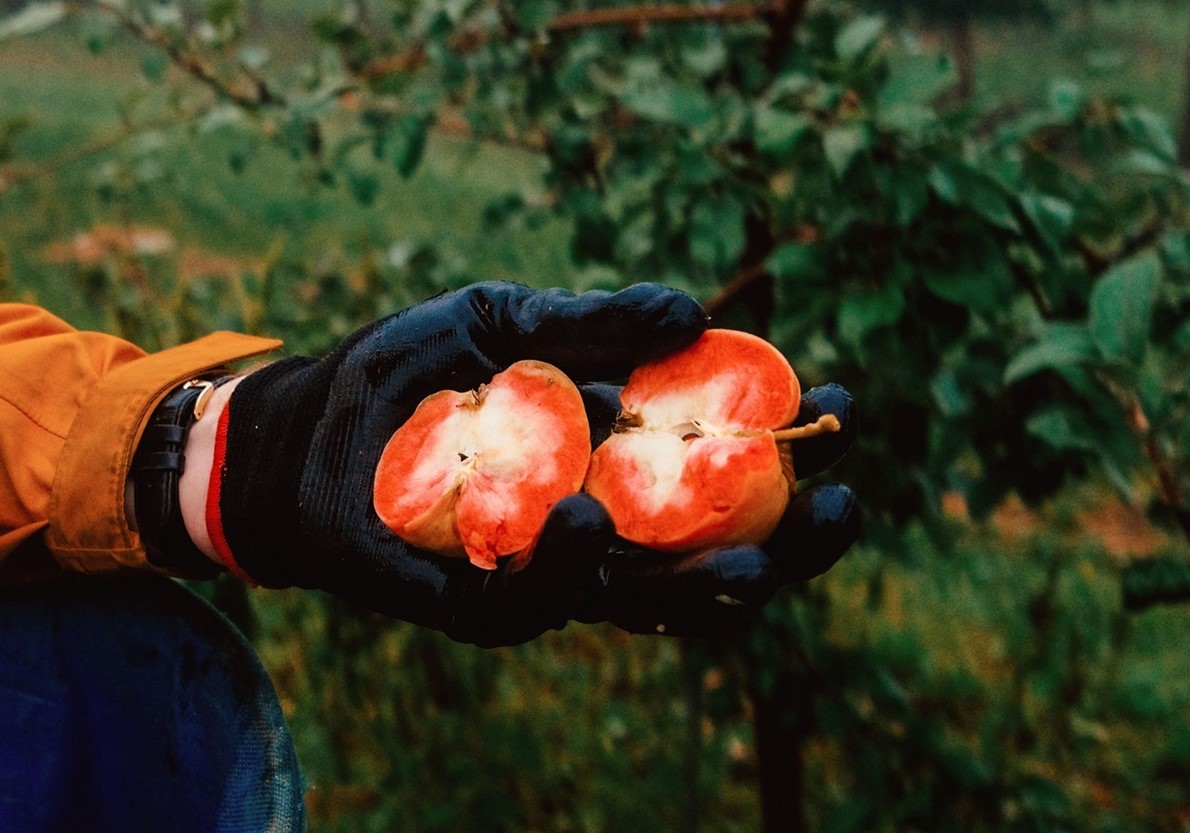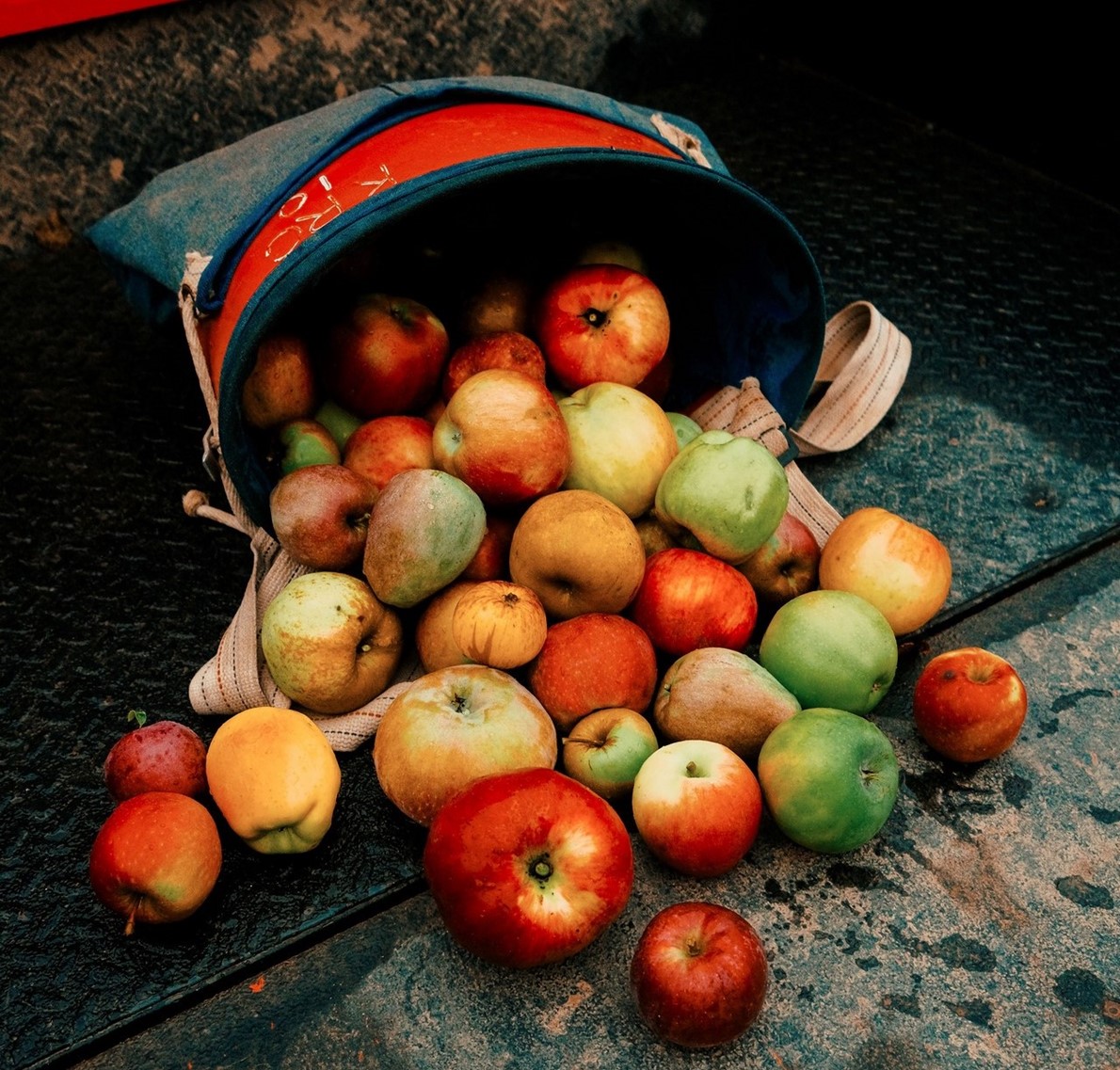Imagine
reaching up to a tree branch and plucking an apple that is unusually tall and
narrow — a variety called Kandil Sinap, native to the
Black Sea region. In an
adjacent arboreal row, 11 trees to the north, you will find the equally exotic
dark purple Black Oxford apples, resembling large plums.
اضافة اعلان
Add 1,000-plus
varieties of the fruit genus Malus, which is bursting with an autumn-themed
rainbow of red, orange, yellow, green, and even purple, to this scene, and you
are in the Apple Biodiversity Collection in the Annapolis Valley of Nova
Scotia.
The apples will
not end up in pies or the baskets of autumn leaf peepers. Instead, scientists
there are working on understanding the genetics that result in this bonanza of
apple diversity, with the ultimate goal of improving the fruit in different
ways — tastier, heartier, more disease-resistant, and with longer shelf-life in
the face of changing climates.
“It’s tremendous to
be able to walk through what is essentially the UN of apples and see the
world’s genetic diversity all in one place,” said Sean Myles, who started the
orchard in 2011, “and that feeling is quickly replaced with a tremendous
urgency to get all this work done.”
You might not
realize it, but many popular apples in grocery stores in recent years originated
with the efforts of scientists examining the qualities of different apple types
and crossbreeding them. With some 7,500 varieties of apple in the world, there
is plenty to discover. Future generations of apples in grocery stores may come
from research orchards like the one in Nova Scotia, which is among the newest.
 A striped apple at the Apple Biodiversity Collection in the Annapolis Valley of Nova Scotia, Canada, on September 21, 2022.
A striped apple at the Apple Biodiversity Collection in the Annapolis Valley of Nova Scotia, Canada, on September 21, 2022.
Myles did not
start out as an apple genes aficionado — he has an allergy to raw apples, which
make his mouth itch unless they are cooked. He had previously worked on human
genetics at the Stanford University School of Medicine. Rather than a love of
the fruit, his love of his now-wife prompted a move to the Annapolis Valley,
where she makes wine. Because the region’s main crop was apples, Myles got into
the business of apple genes. He joined
Dalhousie University’s Faculty of
Agriculture in 2011 and got a Canada Research Chair position with funding to
start the Apple Biodiversity Collection.
There is no
global census of all efforts to preserve apple diversity. A 2019 report
published by the Global Crop Diversity Trust found 40 apple diversity
collections around the world, with seven established during the 21st century,
but because it was not a complete list, the Nova Scotia orchard was not
included. The report also notes that more than half of the 40 surveyed orchards
are in North America or Europe. Only three are in Central Asia and the Caucasus
Region, where scientists believe many contemporary apple varieties originated.
To ensure
greater security of long-term conservation of the world’s apple diversity, the
report calls for a global organization of those who cultivate these
collections. But today, “we are certainly a long way away from having any sort
of international coordination of apple diversity maintenance,” Myles said.
The U30S
Department of Agriculture manages the country’s most diverse apple collection
in Geneva, New York, which is also among the world’s largest, said Ben
Gutierrez, the collection’s curator (the site includes grapes and cherries,
too). Most of the more than 5,000 apple varieties are planted in an orchard
across 12 hectares. Tissue from each kind of apple is stored in a giant freezer
so that if weather or disease harms a particular tree, researchers can
reintroduce that variety to the orchard.
In Nova Scotia,
creating the Apple Biodiversity Collection was a painstaking six-year process.
It involved planting 4,000 little trees, ripping them up after a year,
preserving them in moist sawdust in a giant fridge during the winter,
replanting them during the next summer, then waiting for them to mature. Myles
and his colleagues affixed labels with names to every tree and waited.
The Canadians
collaborated with the
USDA orchard in Geneva, where the focus is conservation,
to obtain the raw materials. Having a lot of the same types in both places
“gives some insight into how the trees would perform in additional sites,”
Gutierrez said. He added that because the Nova Scotia orchard has more of a
research focus, it was designed with randomization, replication, and other
factors in mind, “to make their data more relevant”.
 A pink-fleshed apple at the Apple Biodiversity Collection in the Annapolis Valley of Nova Scotia, Canada, on September 21, 2022.
A pink-fleshed apple at the Apple Biodiversity Collection in the Annapolis Valley of Nova Scotia, Canada, on September 21, 2022.
By conserving a
diverse variety of apples and studying the genetic underpinnings of various
traits, sites like the one in Nova Scotia help to broaden the scope of possible
future apples.
Firmer apples.
More sugary — or more tart. Apples can even have red flesh inside — a
“fashionable” trend spun off from wild Kazakh apples that are too bitter to
eat, said Francois Laurens at INRAE, the French national research institute for
agriculture.
When it comes to
cooking up new looks for a fruit that seems fully baked, apples are harder to
work with than many other crops because of the five- to seven-year wait before
a tree produces fruit. And before a new variety even reaches growers,
researchers take about 15 years to breed and test a given apple.
“We’re easily
talking 20 to 25 years from this year for those new varieties to really get to
consumers in a big way,” said James Luby, professor of horticultural sciences
at the University of Minnesota.
Luby’s claim to
apple fame is his involvement in the Honeycrisp, developed at the University of
Minnesota Horticultural Research Center in the 1960s and 1970s. He started at
the center in 1982, about a decade before the Honeycrisp hit the market in the
early 1990s. At that time, he said, some growers and “probably some
journalists” were skeptical that new apples were needed.
“We knew when we
first tasted it that it was something very different than what was on the
market — you know, that kind of explosive crunchiness, breaking flesh, was very
different,” Luby said of the Honeycrisp apple.

Honeycrisp and
many other commercial apples originated through a technique called controlled
hybridization, which includes taking pollen from one kind of apple tree and
putting it on the flower of another. The cross-pollination produces a hybrid
apple, just as two parents produce a child who shares both of their genetic
traits, said Susan K. Brown, a professor at
Cornell University’s School of
Integrative Plant Science, who leads the nation’s oldest apple breeding
program, also in Geneva.
Other
researchers have pursued genetic modification methods, which alter an existing
apple variety by inserting genetic material. Some GMOs already being sold
include the Arctic apples, with “Arctic” versions of Fuji, Gala, and Granny
Smith apples.
Distinct from
genetic modification is CRISPR, a technique that slices and edits genomes
directly. CRISPR may become important for the future of apples and food
generally. For one thing, “when you want to understand the function of a gene,
you can disrupt it using CRISPR,” said David Chagne of the New Zealand
Institute for Plant and Food Research.
There have been
some preliminary successes — an Italian group demonstrated in a 2019 study that
CRISPR could be used to reduce susceptibility to fire blight disease, for
example.
But CRISPR isn’t
a magic paring knife. Some countries such as New Zealand do not allow CRISPR to
be used for commercial foods, Chagne said. Another difficulty for CRISPR is
that regenerating a woody plant from a single cell is not easy, Luby said.
The Canadian
group is getting into the CRISPR game, but the challenge of the apple’s long
development period also remains an obstacle: Even if Myles’ team can make an
edit to a Honeycrisp plant that makes the apple a little tastier, it will take
five years for the first test fruit to grow up.
“It may be a while
before people are seeing these things on the grocery store shelf,” Myles said,
“but it is coming down the pipeline for sure. And our group hopes to be the
ones that sort of lay the foundation for that.”
Read more Odd and Bizarre
Jordan News



